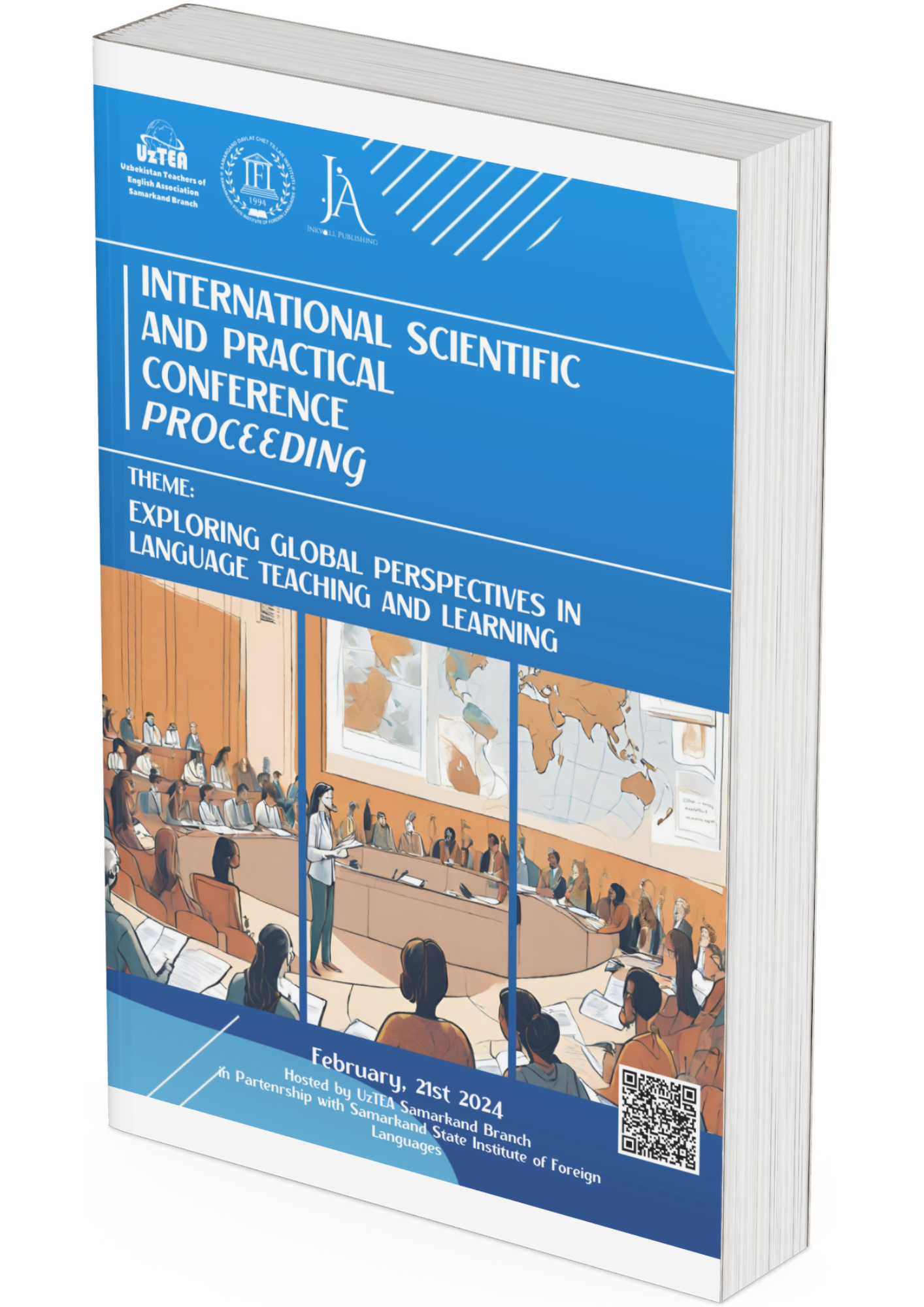DESCRIPTIONS OF IMAGERY, SYMBOLISM, AND NON-REALISTIC ELEMENTS
DOI:
https://doi.org/10.2024/fba4fh40Keywords:
imagery, symbolism, non-realistic, elements, literature, literary expression, narrative, contextsAbstract
This article describes the analysis of selected passages from chosen texts, with a focus on descriptions of imagery, symbolism, and non-realistic elements. By closely examining these literary components, scholars aim to unravel deeper layers of meaning and thematic resonance within non-realistic literature. The analysis involves a close reading approach, wherein scholars meticulously dissect passages from selected texts to identify and interpret imagery, symbolism, and non-realistic elements. This method allows for a nuanced examination of the text's aesthetic and thematic dimensions. Non-realistic elements, such as surrealistic imagery, magical occurrences, and fantastical settings, are subjected to analysis to understand their function within the text. Scholars examine how these elements disrupt conventional reality, challenge reader expectations, and convey abstract concepts or philosophical themes.
References
Balakian, A. (1970). The Symbolist Movement.
Zamora, L. P., & Faris, W. B. (1995). Magical Realism: Theory, History, Community.
Culler, J. (2011). Literary Theory: A Very Short Introduction.
Foster, H. (1988). Surrealism and the Crisis of the Object.
Jung, C. G. (1953). Psychology and Alchemy.
Campbell, J. (1949). The Hero with a Thousand Faces.
Balakian, A. (1970). The Symbolist Movement.
Todorov, T. (1975). The Fantastic: A Structural Approach to a Literary Genre.
Leitch, V. B. (2001). Close Reading: An Introduction to Literature.
Fish, S. E. (1980). Is There a Text in This Class? The Authority of Interpretive Communities.
Freud, S. (1917). Introduction to Psychoanalysis.
Eagleton, T. (2008). Literary Theory: An Introduction.
Rose, M. (1980). The Case of Peter Pan, or The Impossibility of Children's Fiction.
Bhabha, H. K. (1994). The Location of Culture.
Levi-Strauss, C. (1963). Structural Anthropology.
kizi Sarsenbaeva Z. J. Linguistic Differences Contribute to Varying Interpretations of Symbols in Non-Realistic Works.
qizi Sarsenbaeva Z. J. Interpretation of Images and Symbols in English and Uzbek Non-Realistic Works.
Said, E. (1978). Orientalism. New York: Pantheon Books.
Islomovich I. T. et al. Perspectives of Employing World Experience in Providing Academic and Financial Independence to Higher Education //Horizon: Journal of Humanity and Artificial Intelligence. – 2023. – Т. 2. – №. 6. – С. 232-235.
kizi Sarsenbaeva Z. J. The Nuanced Analysis of Images and Symbols in English and Uzbek Non-Realistic works. 2023.
Sarsenbaeva Z., Uteshova Z. Principles of Teaching Karakalpak Students English Speech Etiquette //Humanising Language Teaching. – 2022. – Т. 24. – №. 4.
Utebaev T., Sarsenbaeva Z. Sprachliche analyse von sprichworten. Berlin Studies Transnational Journal of Science and Humanities. Vol. 1 Issue 1.5 Pedagogical sciences.
Zamora, L. P., & Faris, W. B. (1995). Introduction: Magical Realism and the Postcolonial Novel. In L. P. Zamora & W. B. Faris (Eds.), Magical Realism: Theory, History, Community (pp. 1-13). Duke University Press.
Сарсенбаева З. Ж. Педагогические возможности повышения лингвокультурологической компетенции средствами изучения пословиц //Colloquium-journal. – Голопристанський міськрайонний центр зайнятості, 2021. – №. 5 (92). – С. 22-24.
Downloads
Published
Conference Proceedings Volume
Section
License
Copyright (c) 2024 Zoya Sarsenbaeva (Author)

This work is licensed under a Creative Commons Attribution 4.0 International License.









